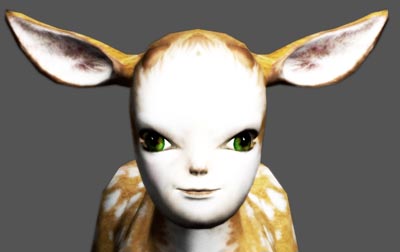
We’ve been asked to step into a project that wants to “provide a standardized global framework that enables the interoperability between virtual worlds and the real world”, backed by some huge corporations and universities. Yes, it’s the popular metaverse dream again! With the succcess of web 2.0, the number of players in World of Warcraft and the appeal to the press of Second Life, the old VRML fantasy is raising its ambitious head again.
For some reason, the engineers and marketeers that build this technology, cannot resist the idea of replicating the real world in cyberspace. This particular project, in which we’ve been invited to participate, mentions “sensors, actuators, vision and rendering, social and welfare systems, banking, insurance, travel, real estate and many others” as desirable things to link to this virtual world, examples of which are “Second Life, World of Warcraft, IMVU, Google Earth and many others”.
As a player, I am also excited by the thought of being able to connect virtual worlds. I’d love to play Grand Theft Auto in my Sim City, ride through The Endless Forest on my Chocobo or take my Level 40 Dwarven Warrior into Second Life. As a developer, the thought gives me nightmares. It’s one thing to allow people to mess with our games, it’s another to have to develop for that. Some standard coding practice would seem like a proper solution for this. But I happen to not be a great believer in standards.
The thing that bothers me the most, however, is this unrelenting desire to connect our virtual worlds to the real one. In the nineties, the whole of MIT was jumping up and down at the thought that a fridge would order cheese by itself or you would send your toaster an email before brunch. And now this: VRML 2.0: a virtual world where you steer an avatar around to do mundane real-world things. Apart from the fact that a virtual world seems like an excessively cumbersome method of going about this, I am also saddened by the extreme lack of imagination that this testifies of.
We have this incredibly sophisticated technology in our hands, a new medium, really, capable of expressing things that have never been expressed before, allowing us to have experiences we have never had before, learn things about ourselves and our world through a new form of art. And all “they” want to do is reproduce the real world and even connect both.
I say: the metaverse wants to be free! Let imagination reign in the virtual worlds! Don’t limit this potential to a dumb replica of our planet: create new planets, entire solar systems, galaxies of stories, billions of characters, avatars and autonomous ones. Let’s visit countless destinations where strange things happen, different from anything you could experience in real life.
When I go online, I don’t want to go to a shopping mall, or do my banking or arrange my insurance. I want to get away from all that. And experience what life is really about: emotions, ideas, stories, communication.
There’s nothing wrong with reality. There’s no need to “augment” it with technology. The sun on my skin, the smell of rain, the pages of a book in my fingers. All perfectly fine experiences. And there’s nothing wrong with virtual worlds. It’s quite alright if we can do things in them that we cannot do in real life. Imaginary worlds have always had their place. They help us find a balance, a harmony with existence. Let them be free. Don’t shackle them to this little planet.




